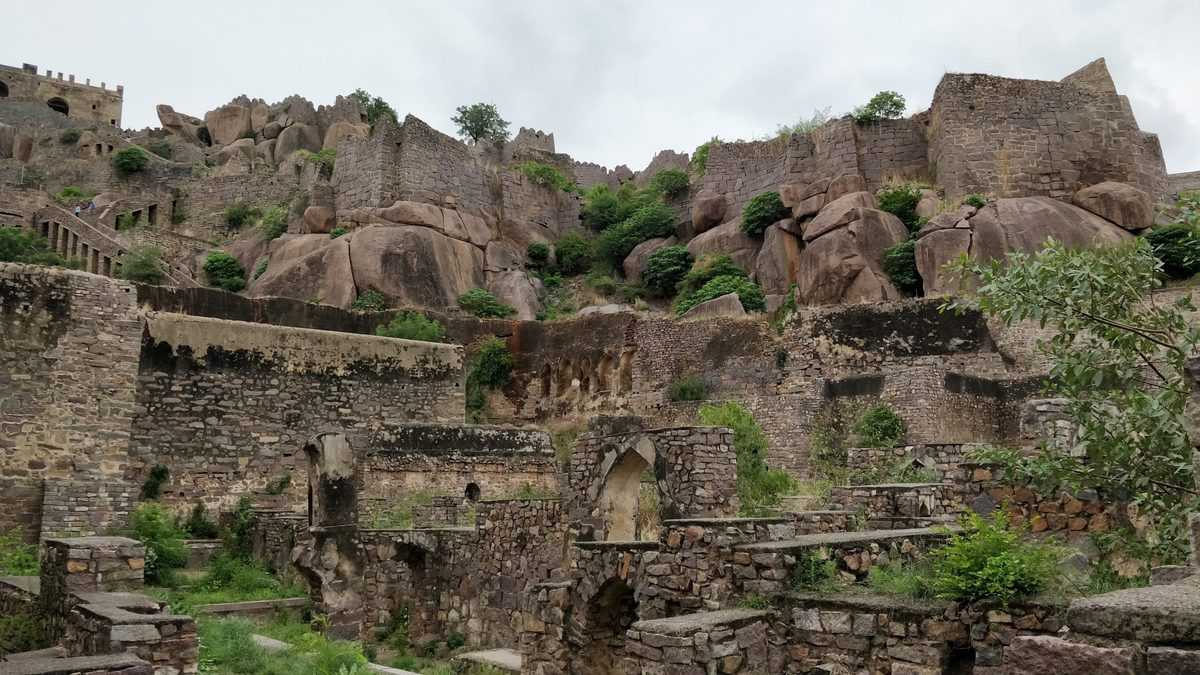Hyderabad: Two months after being shut, the Golconda fort ˆs all set to reopen from June 16 onwards. The Archaeological Survey of India (ASI), which is the custodian of the monument, passed orders for the same, and also to reopen other monuments under it in the state, from day after tomorrow. However, there is no clarity about the Charminar, as the matter of opening it is still under discussion, officials said.
Owing to the ongoing second wave of the COVID-19 virus, the ASI had shut down the Charminar and Golconda from April 15. Both monuments, two of the oldest historical structures in Hyderabad, were in fact closed down even before the Telangana had announced a lockdown from mid May here. Both the monuments were shut down for five months as well last year, after the COVID-19 virus began spreading.
In fact, the citadel (fort) of the Qutb Shahi dynasty, which ruled over the Golconda kingdom from 1518-1687 and built Hyderabad as well, had opened for just one day in July last year. Later the authorities decided against keeping it open due to rising COVID-19 cases in the city and Telangana.
In fact, last year after both places reopened, visitors had to purchase tickets online only from the ASI’s website to enter the fort. Currently, this two the only major tourism monuments that have reopened, while others like the Salar Jung Museum and Chowmahalla palace are still closed.
The Charminar may be thrown open eventually as the COVID-19 lockdown restrictions are slowly lifted. However, due to the fact that the monument is in the crowded Old City area, ASI officials are still unsure of reopening the monument for visitors and tourists.
History of the Golconda fort and Charminar
The Golconda Fort’s origins are traced back to the 14th century when the Rajah of Warangal Deo Rai (under the Kakatiya Kingdom which ruled from Warangal) built a mud fort. It was later taken over by the Bahmani Empire between 1358 and 1375. It was later developed into a full-fledged citadel by Sultan Quli who founded the Qutb Shahi kingdom in 1518 following the death of last sovereign Bahamani emperor Mahmud Shah Bahamani.
Earlier, Sultan Quli was a commander and later governor of Tilang (Telangana), under the Bahamani Empire (1347-1518), when its second capital was at Bidar. Sultan Quli, who was originally from Hamadan, rose to the level of Governor under the Bahamani empire. At this point of time he was given the fort, which he began developing into a walled-city. It eventually came to be called Golconda Fort (name derived from Telugu Golla-conda, or shepherds hill).
The fort has 87 bastions, and eight gates, of which a few are not accessible to the general public as they are under army control. It is believed to be one of the Deccan’s most impregnable forts, and had kept Mughal emperor Aurangzeb’s army at bay for eight months when he laid siege to Hyderabad in 1687. Aurangzeb succeeded and ended the Qutb Shahi reign that year and took Abul Hassan Tana Shah, the last Golconda king, captive.
Charminar: The Charminar is Hyderabad’s foundational monument. Built in 1591, it was constructed to mark the city’s establishment by Mohammed Quli Qutb Shah, the fourth ruler of the Qutb Shahi (or Golconda) dynasty. Prior to the Charminar being built, the Golconda fort was a walled city, from where the first three kings Qutb Shahi kings had ruled.
After Hyderabad was founded, the fort was eventually turned into a military barrack. However, the fort was also the place from where the final Qutb Shahi-Mughal war was also fought in 1687, after Aurangzeb attacked the Golconda kingdom. He succeeded after an eight month long battle, after which the entire Qutb Shahi area was brought under Mughal territory.
The Nizams (Asaf Jahi dynasty), who ruled next, were high-ranking Mughal soldiers. The first Nizam, Mir Qamruddin Khan, attained the position in 1724 and ruled from Aurangabad, which was the capital of the Deccan (Nizam territory).

